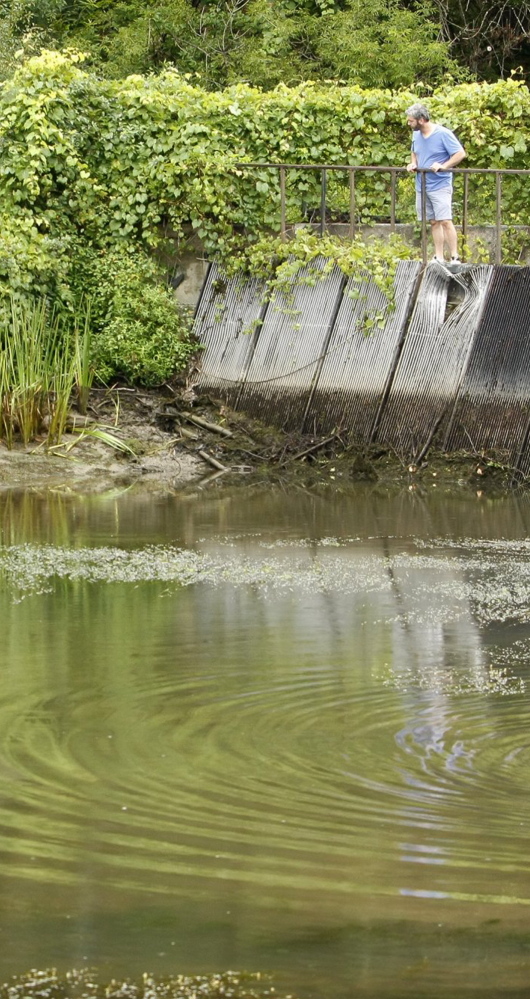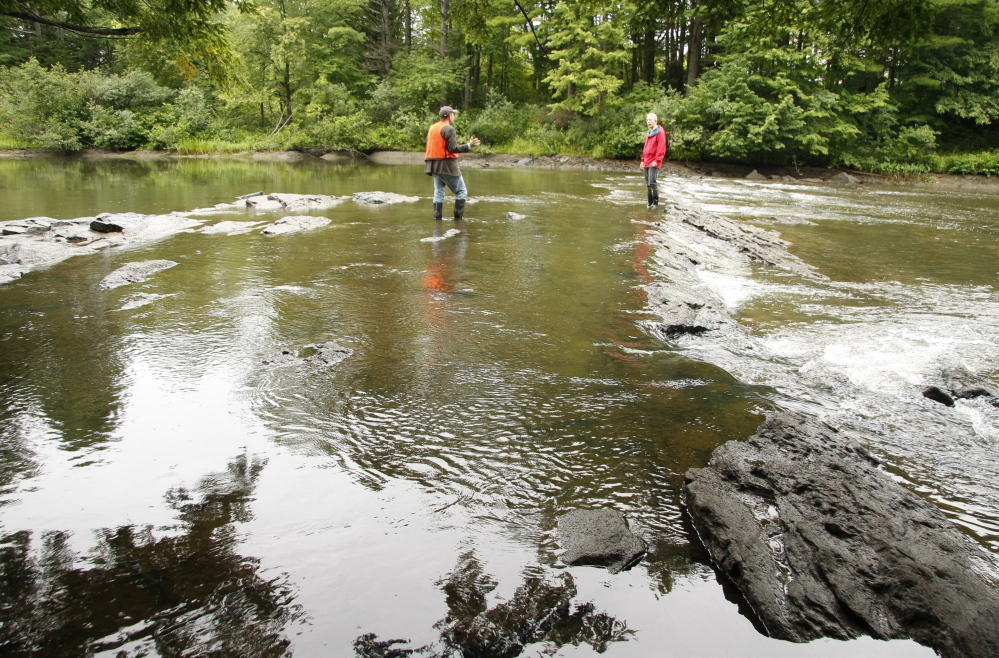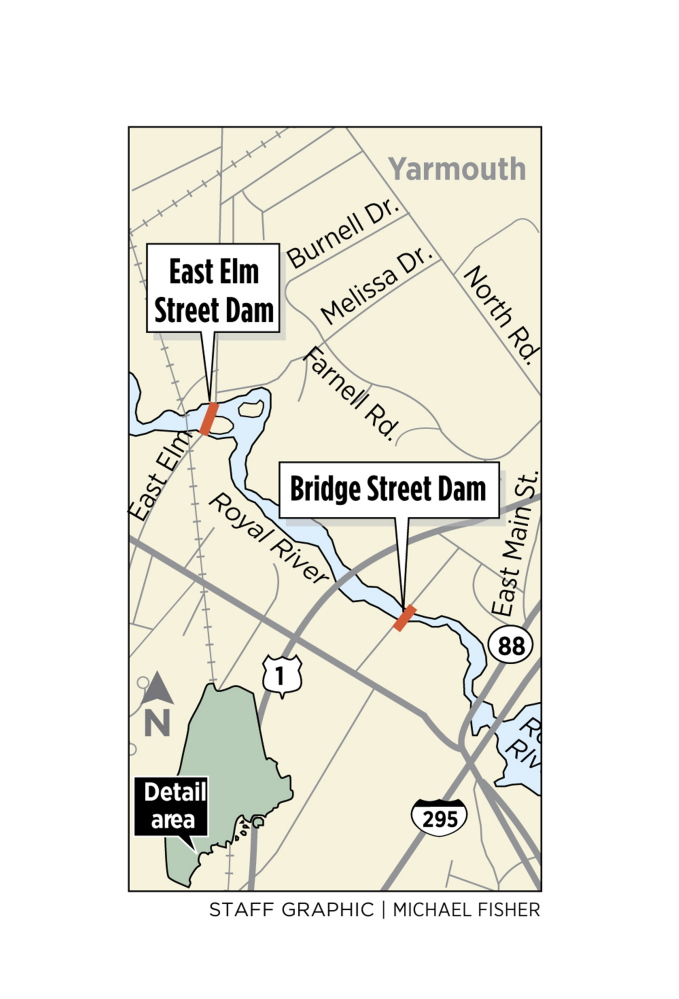Engineers for the town of Yarmouth will begin a drawdown of water between the Bridge Street and Elm Street dams late Tuesday, giving scientists a new chance to gather important data about the riverbed.
Part of regular maintenance for the dam, the drawdown should reduce water levels by several feet and be complete by Wednesday morning, giving a fresh look at the base of the 10-foot-high, 275-foot-long reinforced concrete structure.
It will also be a time for scientists to take roughly 100 measurements in the impoundment area, where the amount and makeup of the sandy, silty mixture on the river floor could prove to be a key factor in whether the Bridge Street dam should be demolished, especially if the sediment contains any hazardous chemicals left over from the Royal River’s industrial past.
“We don’t expect there to be a lot of material in there, but that’s not a very precise term,” said Yarmouth Town Manager Nat Tupper. “People wanted us to not proceed with dam removal until they had a much higher confidence level (that) we knew what the heck we were going to release.”
The Royal River has been dammed for many decades – dating to the long-demolished mills that once stood along the river’s edge in the 19th century, when it was common practice to expel heavy chemicals directly into the water.
Although the mills and manufacturing plants are gone, pollutants could remain hidden in the muck of the river bottom, undisturbed because the dams have impeded flow.
Interest in removing one or both of the dams began in 2011, and the public process surrounding the removal has since absorbed untold hours of discussion, study and hand-wringing.
Citing decades of disrupted fish habitat, environmental activists in town have advocated for removal. In March the town agreed in theory to removing the lower dam at Bridge Street and improving fish ladder access on the upper dam at Elm Street, although the agreement is nonbinding.
Dam removal is a tricky issue for Yarmouth residents, who differ on what is best for the waterway or have varying stakes in the status quo, either professional or recreational.
Some residents prefer the still, slow-moving setting created behind the Elm Street dam, where fishing, boating and other recreational activities have been available for years.
Others see dam removal as a means to restoring runs of fish species, such as alewives, that could not reach the Royal River’s headwaters to spawn.
Wary of dam removal have been owners of the two marinas in Yarmouth Harbor, where an overdue U.S. Army Corps of Engineers dredging project is finally removing built-up mud that flows from the river. If left unchecked for too long, the mud and silt can impede navigation and mooring, especially at low tide.
Deborah Delp, owner of Yankee Marina, is concerned not only about the volume of silt impounded behind the dams, but whether any potentially toxic pollutants could disrupt fishing and boating, the activities on which her business depends.
“We’re not against dam removal; we just want proper due diligence done,” Delp said.
Delp said she plans to hire her own independent engineers to assess chemical levels and hazards once the results of this week’s survey are returned.
When the town’s scientific survey is complete, a group of stakeholders, convened in March by the Town Council, will assess what the proper regimen of chemical testing should be.
Send questions/comments to the editors.






Success. Please wait for the page to reload. If the page does not reload within 5 seconds, please refresh the page.
Enter your email and password to access comments.
Hi, to comment on stories you must . This profile is in addition to your subscription and website login.
Already have a commenting profile? .
Invalid username/password.
Please check your email to confirm and complete your registration.
Only subscribers are eligible to post comments. Please subscribe or login first for digital access. Here’s why.
Use the form below to reset your password. When you've submitted your account email, we will send an email with a reset code.